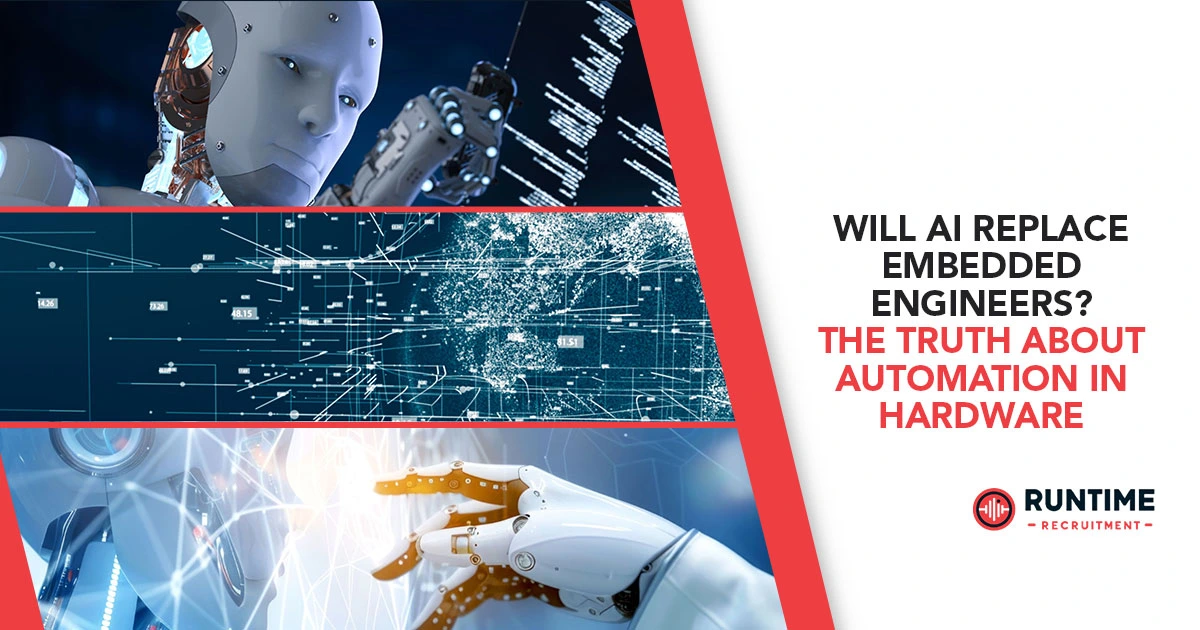Introduction
Artificial Intelligence (AI) is transforming industries at an unprecedented pace. From software development to healthcare, AI-powered automation is reshaping job roles, workflows, and even entire professions. Embedded systems engineering, a field deeply rooted in hardware-software integration, is no exception.
As AI tools become more sophisticated, a pressing question arises: Will AI replace embedded engineers?
The short answer is no—at least not entirely. However, the role of embedded engineers will evolve. AI will automate certain tasks, but human expertise will remain critical for innovation, problem-solving, and system-level decision-making.
In this article, we’ll explore:
- The current state of AI in embedded systems
- Tasks that AI can (and cannot) automate
- How embedded engineers can adapt and thrive in an AI-driven future
1. The Rise of AI in Embedded Systems
AI is already making inroads into embedded systems in several ways:
a. AI-Assisted Development Tools
- Code Generation: Tools like GitHub Copilot and TensorFlow Lite for Microcontrollers help automate boilerplate code, reducing development time.
- Debugging & Optimization: AI-powered static analyzers and runtime profilers can detect memory leaks, performance bottlenecks, and security vulnerabilities faster than manual reviews.
b. AI in Hardware Design
- Automated PCB Layout: AI-driven tools (e.g., Altium’s AI features) can optimize component placement and routing, speeding up PCB design.
- RTL Synthesis & Verification: Machine learning (ML) is being used to optimize FPGA and ASIC designs, reducing time-to-market.
c. Edge AI & TinyML
- On-Device Machine Learning: Embedded systems increasingly run AI models locally (e.g., TensorFlow Lite, PyTorch Mobile), enabling smart sensors, predictive maintenance, and real-time decision-making without cloud dependency.
- Automated Model Optimization: AI can prune and quantize neural networks to fit resource-constrained microcontrollers (e.g., STM32, ESP32).
2. What AI Can (and Cannot) Automate in Embedded Engineering
Tasks AI Can Handle
✅ Repetitive Coding Tasks – Auto-generating drivers, RTOS configurations, and HAL layers.
✅ Testing & Validation – AI can run thousands of test cases in parallel, identifying edge cases humans might miss.
✅ Performance Optimization – AI tools can fine-tune clock speeds, power modes, and memory usage.
✅ Predictive Maintenance – AI models analyze sensor data to predict hardware failures before they occur.
Tasks AI Cannot Replace (Yet)
❌ System Architecture Design – Deciding between an MCU vs. MPU, RTOS vs. bare metal, or wireless protocols requires deep domain expertise.
❌ Hardware-Software Co-Design – Balancing power, performance, and cost is a nuanced task that AI cannot fully replicate.
❌ Debugging Complex Issues – While AI can flag errors, diagnosing race conditions, interrupt conflicts, or hardware faults often requires human intuition.
❌ Ethical & Safety-Critical Decisions – Autonomous vehicles, medical devices, and industrial systems require human oversight for risk assessment.
3. How Embedded Engineers Can Stay Relevant
Rather than fearing AI, embedded engineers should embrace it as a productivity multiplier. Here’s how:
a. Upskill in AI & ML
- Learn TinyML (machine learning on microcontrollers).
- Experiment with AI-driven debugging tools (e.g., Lauterbach’s Trace32 with AI insights).
- Understand AI accelerators (e.g., NVIDIA Jetson, Raspberry Pi AI Kit).
b. Focus on High-Value Tasks
- Shift from manual coding to system-level design.
- Specialize in real-time systems, security, and low-power design—areas where AI still lags.
- Develop cross-disciplinary skills (e.g., robotics, IoT, FPGA programming).
c. Collaborate with AI, Not Against It
- Use AI for automated testing to free up time for innovation.
- Leverage AI-assisted simulation (e.g., Ansys SCADE, MATLAB’s AI-based modeling).
- Adopt AI-powered DevOps for CI/CD pipelines in firmware development.
4. The Future of Embedded Engineering with AI
AI won’t replace embedded engineers—but engineers who use AI will replace those who don’t. The future will likely see:
- More AI-augmented workflows (e.g., AI suggesting optimal peripheral configurations).
- Increased demand for edge AI specialists (deploying models on resource-constrained devices).
- New job roles (e.g., “Embedded AI Engineer,” “Hardware-AI Integration Specialist”).
Conclusion
AI is a powerful tool, not a replacement for embedded engineers. While it will automate repetitive tasks, the need for human creativity, problem-solving, and system-level thinking remains irreplaceable.
The key takeaway? Adapt, upskill, and leverage AI to enhance your productivity. The future belongs to engineers who can bridge the gap between hardware and AI—not those who resist change.
What do you think? Will AI take your job—or make it better? Let’s discuss in the comments!









